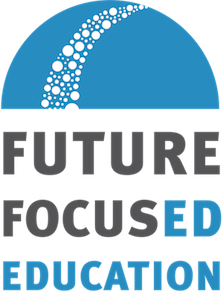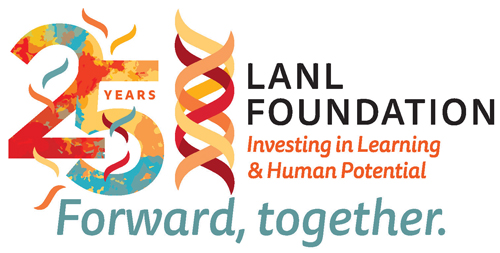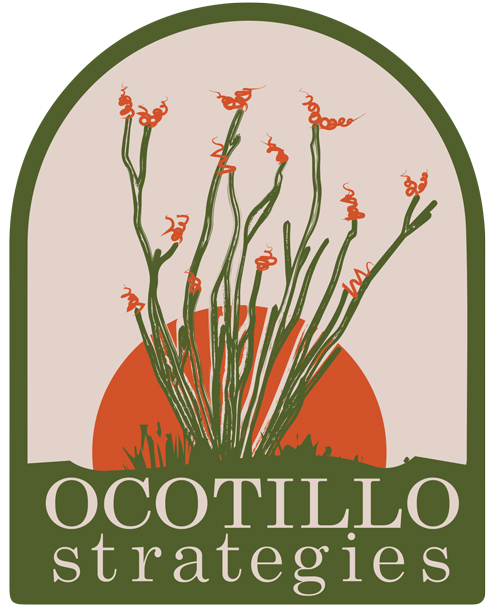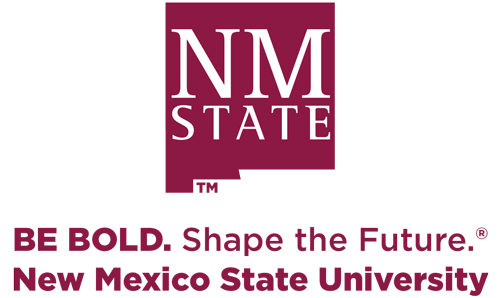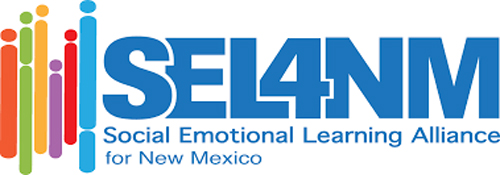Aztec, New Mexico:
A Case Study in Innovation
Different by Design
To be engaged in school, students must be able to apply what they’re learning (and how they learn it) to their own lives. And in order to thrive, students need to be supported emotionally and physically, not just academically. This may sound simple, but providing these types of learning and supports is a drastic shift away from traditional education. But that’s what school administrators and teachers, with the help and support of an entire community, are doing in a little town of 6,000 people in the Four Corners region of New Mexico.
For the past few years, Aztec High School (AHS) and Vista Nueva High School (VNHS) have made a concerted effort to design curriculum and programs with the goal of re-engaging young people in school and in the community. The district believes in doing education differently–or, as they say on their graduate profile, “different by design.”
“It’s not enough to just be different,” explains AHS Principal Brandon Thurston. “It needs to be intentionally designed to be different in order to succeed.”
Since their internships are paid, students are able to help their families or graduate with savings while still focusing on their academic performance. Students in Aztec have been able to buy their family Christmas presents, help their parents pay rent, or save up for something they really wanted. Plus, the district is putting on financial literacy workshops and classes to ensure the students learn how to effectively manage the money they make while interning.
The internship opportunities in Aztec are tailored to each student’s interest, but they are not random; they are designed to work with the rest of a student’s education. Aztec offers different Career and Technical Education (CTE) pathways, all of which are centered around a particular career or field and include classroom instruction, capstone courses, and work-based learning opportunities. The pathways currently being offered are: Construction, Healthcare, Business, Military Science, Welding, Agriculture, Education, Engineering/STEM, and Computer Science. When students complete a pathway and graduate, they leave high school with experience as well as credits and even credentials that give them a leg up when it comes to career and/or college.
Even if Aztec students are not interested in any of the CTE pathways that are offered, they have access to dual credit through San Juan College. There are over 400 class sections students can choose from and while some of these require travel to Farmington, many are offered online or on the AHS campus. Dual credit courses are free, meaning that students who might not know what they want to do in college can gain exposure and experience without footing the bill.

—Joslyn Brooks,
Student at Aztec High School
Aztec as an Innovator
While the district was already implementing some of these changes, funding from the Innovation Zone Initiative (IZ) has given them the capital and support to make them a reality. Many schools, especially in rural areas and lower socioeconomic areas like Aztec, need extra funds to make these things happen.
The Innovation Zones Initiative brings together initiatives and funding that are often disconnected. It supports the integration of graduate profiles, capstones, high-quality CTE, work-based learning, and personalized supports. Districts and charter schools apply to be a part of the Innovation Zone Initiative through the New Mexico Public Education Department. Once approved, they are provided with funding and support to implement innovative practices in their schools. Aztec was one of the first districts to be awarded IZ funding in 2021. Since then, they’ve had support developing graduate profiles, capstones, and new internships programs. The funding has also enabled dramatic expansions of programs they already had and the replacement of outdated equipment, such as welders and computers.
Thanks to IZ funds, not only do students intern in Aztec proper, they also get transported to all corners of the county so that they can intern in a place that aligns with their career goals and interests. Aztec, like many rural areas, doesn’t have a lot of opportunities for young people when it comes to different careers. In fact, most rural communities and lower socio-economic areas can’t offer students the kinds of experiences that cities like Albuquerque can. But with funding from the state, Aztec students can gain experience at local businesses or get transported to other professional environments more aligned with their goals. Additionally, local businesses can develop interns into future employees without having to pay out of their own pocket for the training. In fact, many local businesses have ended up hiring interns after their internships are over.
Internships in Action
Aztec Family Dental
One local business, Aztec Family Dental, has four interns this semester: Shantel Chacon, Joslyn Brooks, Mya Rodriguez, and Priscila Ramos. The dental office hired two former interns as dental assistants after their internship ended because they were so impressed. Office manager Sarah Durfey brags about how much her interns have learned and accomplished. Several previous interns are now considering a career in the dental field because of the exposure they gained in their internship. Experiences that expose students to different careers are crucial for building a better trained workforce and filling employment gaps in the state of New Mexico and nationwide—and there are notable gaps in healthcare providers in NM, including dentists and dental hygienists and assistants.

—Sarah Durfey,
Office Manager at Aztec Family Dental
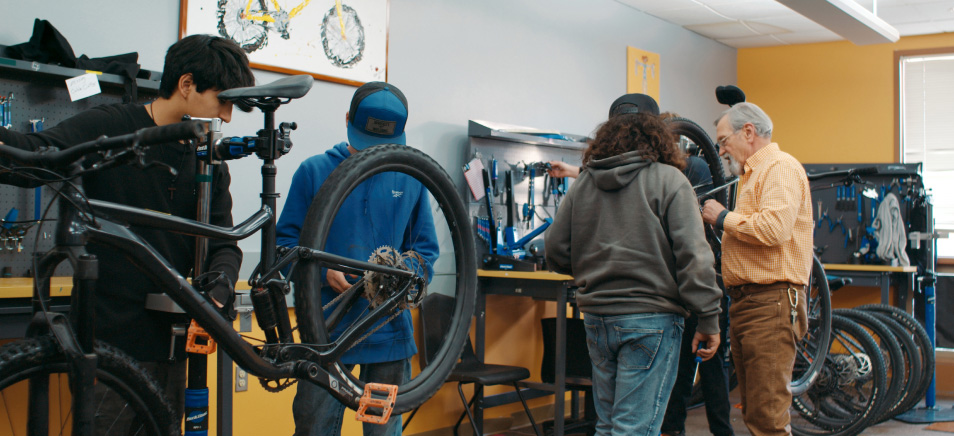
Project Bike Tech
“Project Bike Tech” is part of the Engineering/STEM pathway at AHS. As part of the “Project Bike Tech” program, students have access to a fully functional bicycle shop, where they learn how to repair and maintain bikes. The program has a fleet of bikes students can ride, provides an active student bike club, and even donates bikes to students in need. Project Bike Tech also plans to donate some of the bikes they have fixed to parolees who need transportation.
AHS students in Engineering can also take a rocketry class where they learn to use Computer-Aided Design (CAD). Rocketry students have visited AGILE Space Industries to learn how rocket engines are designed, manufactured, and tested. Each CTE pathway offers similar connections; students in the Healthcare pathway get to work with an athletic trainer to treat student athletes, for example.

—Kenny Cole,
Student at Aztec High School
The district was able to take their bike project a step further after Barefoot Bikes opened in downtown Aztec in 2022. Owner Wade Anderson grew up in Aztec and has a passion for bikes. He left the oil & gas industry to open the shop and has big dreams for downtown Aztec and the community, including buying an empty lot and putting in a bike park or pump track. Anderson has onboarded two bike tech interns–one from each high school–to help him out since he is otherwise the only employee. His first intern, Kenny Cole, has already become a part time employee and plans on working for Anderson full time after he graduates in May. Anderson hopes that in addition to helping run the shop, Kenny will be able to train future interns.
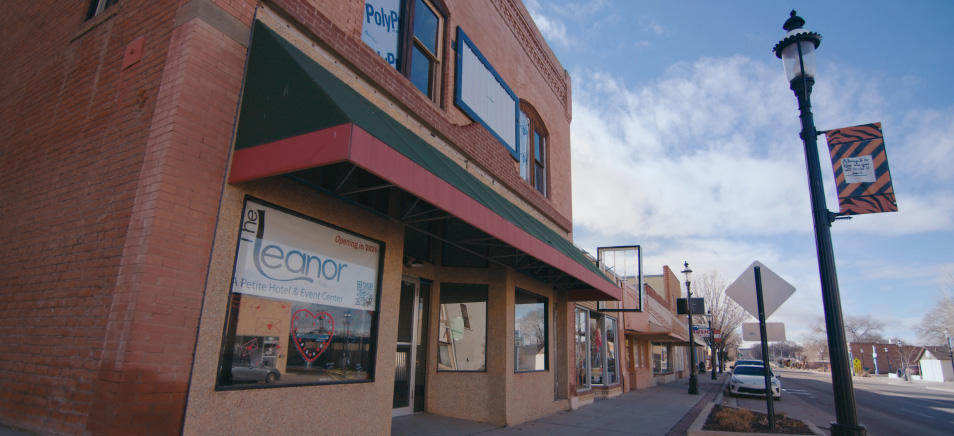
The Leanor
For one day a week, Vista Nueva students Treya Wolfe and Suela Clearwater join their mentor, Flo Trujillo, at an old building in downtown Aztec for their capstone project. They walk through the bones of the building, which was built in 1906, with its owner, Robin Kelly, who directs them to places she needs help with, pointing out some of the building's quirks along the way. There’s a stairway so steep it can’t be open to the public, lath and plaster walls that make it harder to install things like light fixtures or pictures, all original hardwood floors, and chamfered wood posts.
While the students assist with the construction and renovation–sanding, sweeping, putting turquoise into the gaps in the floorboards–they also help construct the vision for the building. They envision it being a safe space where youth in Aztec can host open mics, hang out and study, and sell their artwork–or for Suella, who has her food handler’s card, sell pastries to pair with the coffee they’ll also be serving. As part of the process, both students have met the mayor and attended economic development meetings at the city.

—Suela Clearwater,
Student at Vista Nueva High School
“They are learning about nonprofit management alongside the do-it-yourself skills that are so crucial in rural communities,” says Trujillo, who is not only their mentor but also the President of the Northwest New Mexico Arts Council (NWNMAC). NWNMAC is partnered with the Youth Civic Infrastructure Fund, which has also helped to find the internship programs offered at Vista Nueva High School.
Trujillo pitched this project to students in Aztec after her friend from the library–an Aztec local named Robin Kelly–purchased the place and named it after her late mother, Leanor. Trujillo saw the potential for learning and the impact the project could have, not just on the students, but also on youth in the region, the community overall, and on Aztec’s downtown area, which she hopes to see revitalized. Students voted on which projects they wanted to do and Trujillo’s won, maybe because youth here are excited about a space just for them.

—Alicia McClung,
Capstone Advisor, Vista Nueva High School
Aztec's Restorative Practices
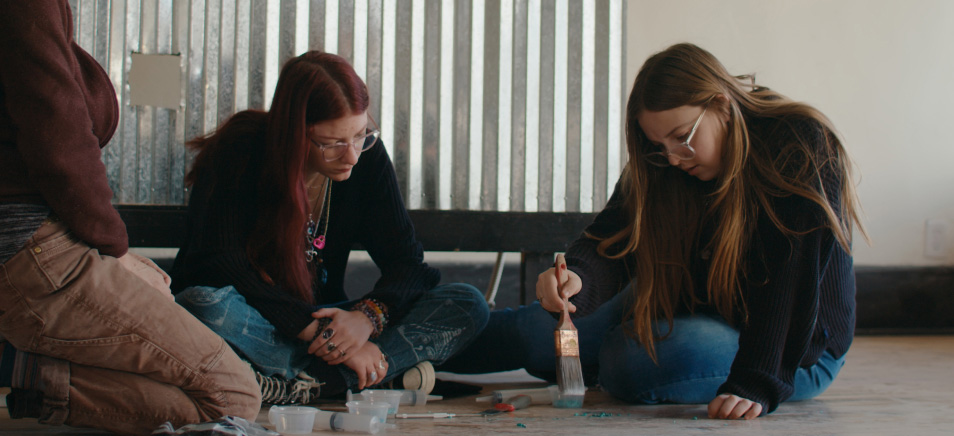
Most of the innovative practices that are under way in the district are not new for Vista Nueva High School–a small, alternative high school that has gone from being the school students were sent to when they were deemed a “problem,” to a place students choose to attend (now with a waitlist of 100 students). What’s new is the additional funding and support to make changes. Often, innovation in the district begins at Vista Nueva because it’s easier to implement things at such a small school–VNHS has just 80 students. Principal Dreher Robertson describes VNHS as a tugboat leading the large ship that is AHS. In fact, the two schools learn from and help each other build opportunities for students–and the students, too, work together at various internship sites throughout the district.
One of Robertson’s focuses with the IZ funding has been on “restorative practices.” Restorative practices involve fostering a sense of community within classrooms to prevent conflict, and navigating misconduct by encouraging students to accept responsibility and rebuild relationships.
According to Principal Robertson, restorative practices “go beyond saying, ‘These are the rules and you need to follow them’ to saying ‘Hey, we don’t usually have issues of disrespect. Is something going on in your life? What’s happening?’”
While there are a whole host of classroom strategies associated with restorative practices involving community building and communication, Robertson says the most important part is what happens after a student acts out.
“What’s typically missing is the reintegration and reconnection piece for a kid who gets suspended,” says Robertson. He says the reconnection between the teacher, administration, and student is rarely done well–all parties aren’t usually given the time and space to heal from whatever the conflict was. This approach attempts to change that by creating a classroom environment where both teachers and students want to be present, where everyone’s humanity is acknowledged.
When asked why he supported restorative practices in particular, Robertson cited disciplinary data in the country and the state, saying it was, “even more skewed when it comes to Yazzie/Martinez, our students of color.”
“We have a disproportionate amount of white teachers for students of color, who don’t understand each other's cultural backgrounds, who don’t understand each other’s home lives. There’s a disconnect there that needs to be healed,” says Robertson. Implementing restorative practices is one way to start that healing and build understanding.
“The idea is shifting the philosophy of everyone on our team and making relationships with students the focus of everything we do,” says Robertson.
Focusing on the Future

Catherine Olson is the College and Career Readiness Specialist for the Aztec Municipal School District. Olson has lived in the region for twenty-five years and worked for the school district for the last nine. As she walks around AHS, she greets students and asks them questions about recent exams or sporting events. Eventually she points out the wing where a school shooting happened in 2017.
The hallway is now full of art from Aztec students and from schools across the country. A few students lounge on the tables that have been set up to form a study area where there used to be classrooms.
Olson's own children were there the day of the shooting. “We lost two of our students. It really traumatized our community,” she says.
Healing from a tragedy like the AHS shooting is hard anywhere, but in such a small community, it can be even harder because everyone knows everyone. But the people of Aztec and surrounding towns have come together to support their youth in the years since, with tons of employers and mentors signing up to host interns and ensure that students in Aztec have more options and more support.
“It’s all a lot of people remember when you say Aztec High School,” Olson says. “But our community has really come together and we have all of these great things happening. These changes are about Aztec focusing on our future, not dwelling on the past.”

—Catherine Olson,
College and Career Readiness Specialist, Aztec Municipal School District
All of these innovations in Aztec are working–students are more engaged in their classes and in the community. And it’s not only A students who are doing internships. Olson says she’s seen students who were failing almost every class get excited by an internship and start to do better in school again.
At VNHS, when a student who had interned at the mortuary in the fall wasn’t able to return the following spring, her grades, which had been all A’s and B’s, began to drop. Principal Robertson met with the student in his office to see how he could help. The student replied that going to the internship every week had made her feel like she had a place to go after high school. And when the internship was over, she felt disconnected and stopped trying as hard in class.

